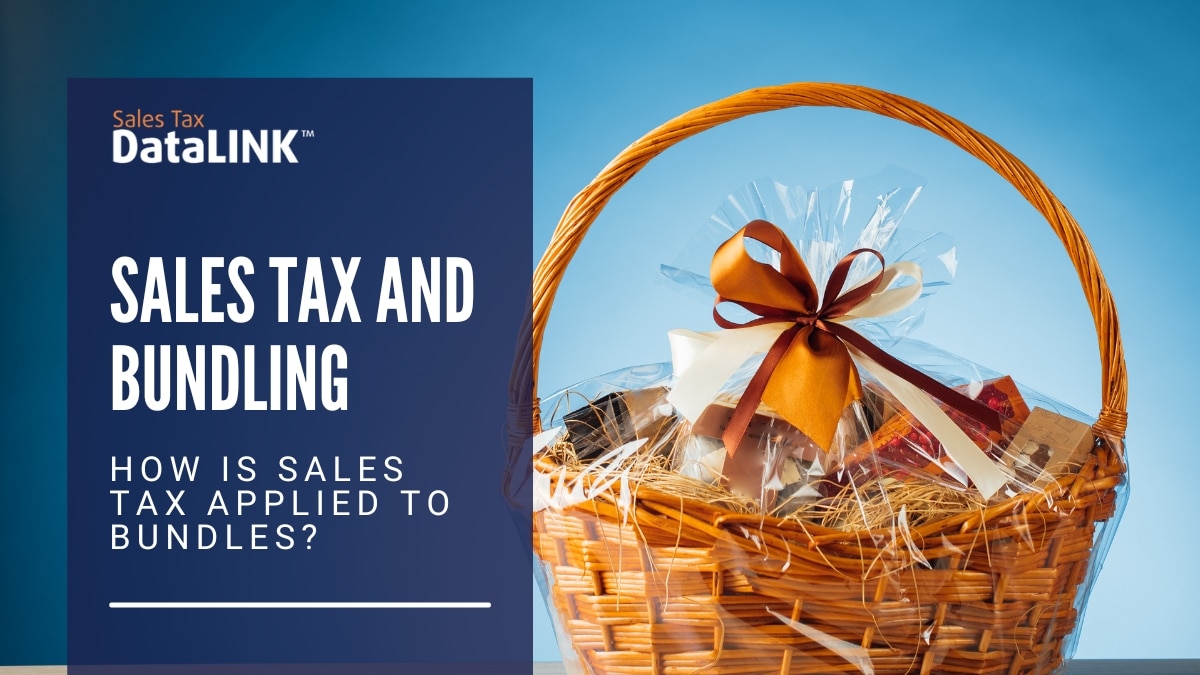You may assume your goods and services are clearly taxable or exempt from sales tax. But sales tax and bundling make things more complicated. Bundling combines taxable and non-taxable items together, which can change how sales tax regulations apply. The practice of bundling taxable and non-taxable goods and services together in one offering creates complications in determining sales tax rules.
What is Bundling?
Most tangible goods are subject to sales tax, but services and digital goods may not be. There are also tangible goods that are exempt from sales tax. When you bundle taxable and non-taxable goods and services together in one offering, the sales tax question can get more complicated.
For example, think of a jewelry store that pierces ears as well as selling earrings. Earrings are taxable and piercing is taxable in some states and not in others. Ear piercing is likely to involve both the piercing and an earring or two. The jewelry and the piercing in this case are bundled together and may be sold at one price.
More examples: video consoles sold with downloadable video games, photography services sold with packages of prints or image files, or a repair that includes both labor and parts at a single price. In each of these cases, one of the items might be taxable while the other is not.
How is Sales Tax Applied to Bundles?
Depending on the state, the bundle of piercing plus a stud may be treated in different ways. For example, in Georgia, if there is a separate cost for the jewelry used in the ear piercing, the piercing and the jewelry must both be taxed. In Connecticut, the piercing is not taxable even if the jewelry is. In Massachusetts, the jewelry is taxable and the piercing is not as long as the two items are listed separately on the invoice, but if they are bundled the whole transaction is tax-exempt as long as the jewelry costs less than 10% of the total. Got that?
Another example would be a gift basket that includes food and also other items, such as baking mixes packaged with baking equipment or tea and cookies packaged with a mug. In Wisconsin, if the taxable items comprise more than half of the cost of the gift basket, the whole thing is taxable. California has a similar (though more complicated) percentage rule, but it depends on whether or not you have records proving the cost of each item included in the gift basket.
The simplest and broadest approach is just to say that including a taxable item in a bundle makes the entire bundle taxable. It’s hardly ever that simple, but that’s always a possibility.
The Streamlined Sales Tax Project did a survey of states to figure out a single bundling regulation that could apply to all the states taking part in the project. They produced a 12-page document that was merely a bundled transaction. They didn’t come up with a simple formula or even a general agreement on what to do with bundled transactions once they were defined.
Now what?
You must do three things to cope with sales tax and bundling:
- Identify all your company’s bundled transactions.
- Determine how sales tax is applied to these particular bundled transactions in the jurisdictions where you sell them.
- Make sure that you are keeping the kinds of records required to support the tax you charge.
For this kind of transaction, you need to be very clear on the amount of sales tax you should be collecting. If you discover later on that you should have been charging sales tax but you didn’t do so, you will be responsible for those taxes even though you didn’t collect them.
Do you need Sales Tax DataLINK?
Sale Tax DataLINK employs teams of sales tax experts based in the United States. When you have questions about your sales tax obligations, we can help. Call now! 479-715-4275.




